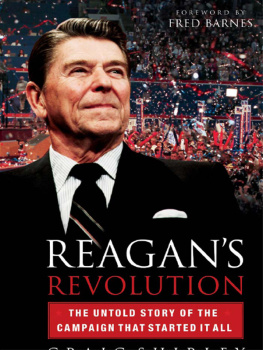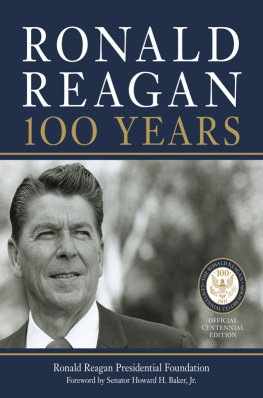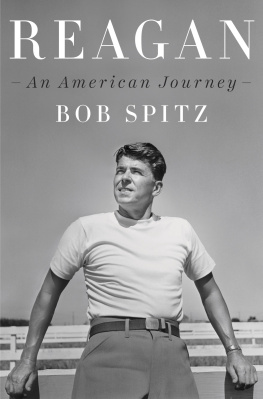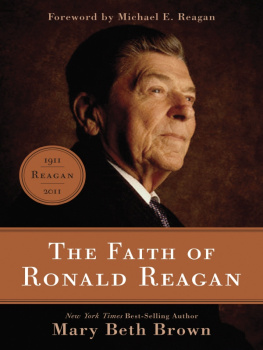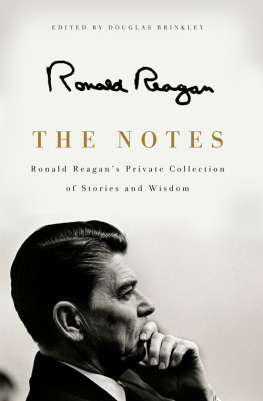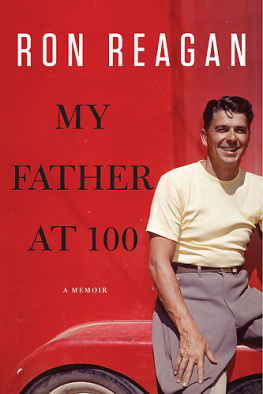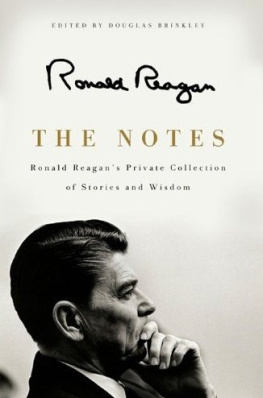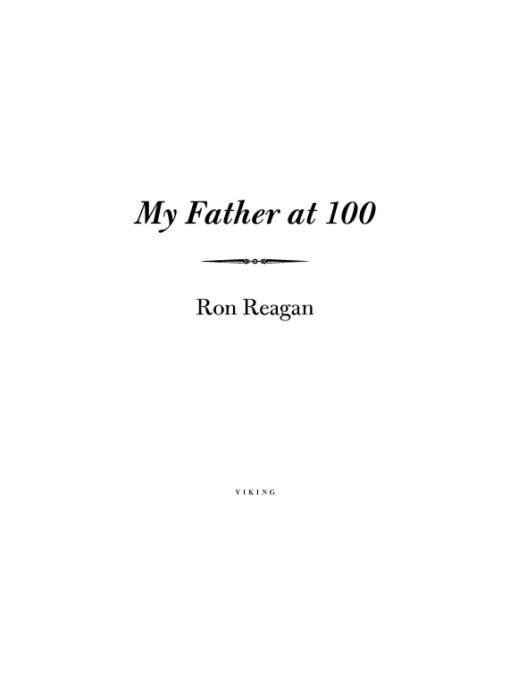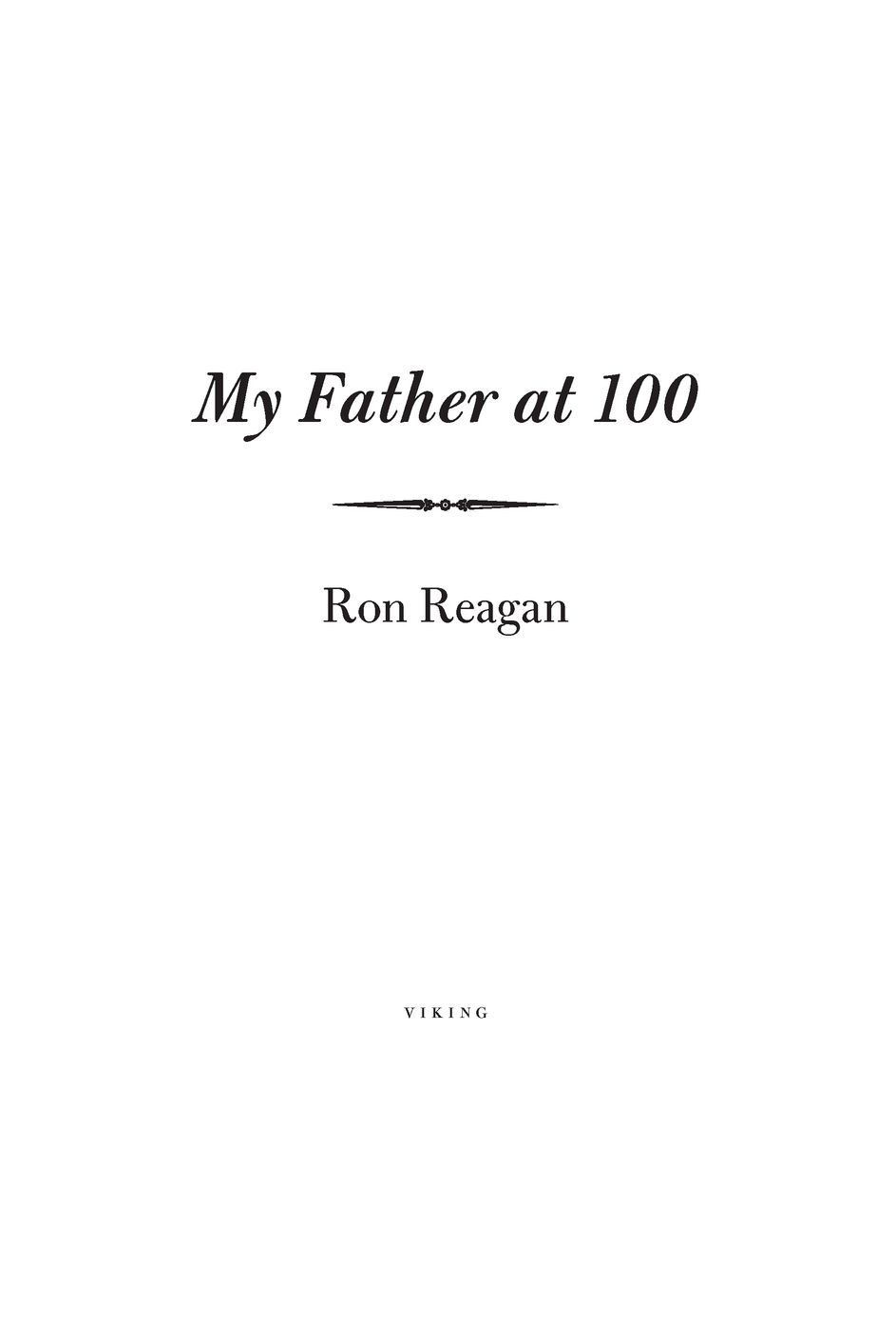Table of Contents
To all the family members
whose stories I never knew
and
To Doria,
whose story is forever intertwined
with my own.
Acknowledgments
As a first-time author, I would have floundered without the help of many generous souls. I owe Clare Ferraro a debt of gratitude for taking a chance on me in the first place. Editor Rick Kot provided invaluable advice; his thoughtfulness and thoroughness are matched only by his deft, light touch. Thanks also to Laura Tisdel, Kyle Davis, Rachel Burd, Francesca Belanger, and Gregg Kulick. No book would have been possible without the hard work of Laurie Jacoby, a friend and ally for many years, and Lydia Wills. Im profoundly grateful to both. There were helping hands all along the way. At the Reagan Presidential Library my job was made considerably easier by Mike Duggan, Steve Branch, Kirby Elizabeth Hanson, Joanne Drake, and Wren Powell. In Tampico, Illinois, I received invaluable help from Joan Johnson along with David and Judy Jacob-son. In Dixon, I was warmly received and aided by Connie Lange, Sue Little, Phyllis Scherer, Arlene Waterhouse, Marla Tremble, and William Jones. Eureka College also rolled out the welcome mat. Special thanks to Eurekas president, Dr.J. David Arnold, Brian Sjalko, Anthony Glass, and Jyl Krause. Jim Santanella provided invaluable technical help. Deepest thanks as well to my mother, Nancy Reagan, for her enthusiastic support every step of the way and to my wife, Doria, for her love and patience.
Introduction
Through the sepia of the old photograph, I can make out the man, his left foot casually crossed over the right, leaning against the corner post of a storefront window display. He has removed his jacket, keeping buttoned a vest of dark wool that matches his neatly pressed trousers. With his arms folded, his white shirtsleeves cross his chest, revealing stiffly starched cuffs fastened by cuff links. A bright white collar with a dark necktie snugly knotted beneath sets off a noticeably bronzed complexion, but the features of his face, awash in morning sunlight, are hard to make out beyond a thick flop of hair over the left brow and a pair of noticeably prominent ears. Above him, a sign announces: CLOTHING SALE. I read the handwritten inscription on the pictures lower border: Suppose you know the fellow in his shirtsleeves...
It takes me a moment to put things together, but then I suppose I do. The man in the doorway of the H. C. Pitney Variety Store in Tampico, Illinois, is my grandfather, John Edward (Jack) Reagan. The photograph appears to have been taken between 1906 and 1914, right around the time of my fathers birth, which would put Jack in his mid- to late twenties. The inscription, written years later by his wife, Nelle, my grandmother, was most likely intended for one of her two sons, John Neil (Moon) or Ronald. This is the first time Ive laid eyes on it.
Im sitting in the research room of the Ronald Reagan Presidential Foundation and Library in Simi Valley, California, some 1,600 miles and roughly a century removed from that sunny morning in Tampico, feeling a bit like an archaeologist sifting through the scant relics of my familys ancient past. Actually, Im feeling like a very fortunate and pampered archaeologist. Many folks these days are exploring their family histories; not many have an entire research facility eagerly helping with the effort. A Spanish-style edifice of ochre stucco commanding a rolling ridge of grass and chaparral north of Los Angeles, the Reagan Library holds, as you would expect, a vast trove of presidential papers as well as documents from my fathers days as governor. But it has also become a repository for various and sundry items connected to my family, including the kind of personal artifacts that have a way of turning up in the bottoms of trunks or slipping from between the pages of family Bibles.
Where, I wonder, did this photo and several others like it come from? Mike Duggan, the librarys supervisory archivist, cant say. He carefully removes several musty Dixon High School yearbooks from their tissue paper wrappings, cautions me to handle them using the white cotton gloves he has provided, and heads off to check with Steve Branch, who is in charge of audiovisual material. Steve, it turns out, believes the pictures must have been sent over by my mother after one of her periodic housecleaning campaigns. When I check with her later that night, however, she pleads ignorance. From my description of the photos, she doesnt believe shes familiar with them. Im left wondering whether my fatherso reflexively guarded in his privacyfor some mysterious reason kept hidden from his loved ones a small treasury of family photos, including many of his own father as a young man and some of the only pictures Ive ever seen of his aunts and uncles. That would be odd, my mother agrees. Yes, I think to myself, but not altogether surprising.
Setting my suspicions asideits conceivable the photos were donated to the library by Dads brother, Moon, I focus back on the photograph itself. It and a similarly captioned companion are the clearest look Ive had at the world into which my father was born. Tampico, his original hometownthen and now a postage stamp on a flat patch of farmland in north central Illinois, a little over 100 miles west of Chicagolooks a bare half step evolved from Dodge City. None of the brick or clapboard storefronts stands more than two stories. The sidewalks are raised above a dirt thoroughfare, the better to keep mud and worse from being flung at pedestrians by the wheels of passing carts and carriages. There are hitching posts where parking meters might be today. Only the electrical wires strung overhead hint at modernity.
The other photo provides a view across the street, with the apartment where the Reagan family lived at the time identified by an X etched in ink. Another, ruder X next door has been rubbed out. Jack had the wrong flat marked so I put the cross on the right one, my grandmother has written below.
The photographers own caption says, Busy Day, Main Street, which appears to be no exaggeration. Outside, in the street below the flat, I count 20 horse-drawn conveyances of various descriptions, from farm wagons to sport buggies. The sidewalks are lively, mostly with men, who stand talking in small clusters in front of the post office and J. R. Howletts hardware store. Charles Darbys tailor shopCLEANING AND REPAIRING A SPECIALTYgraciously offers those who care to linger a LUNCH ROOM. And there, in the middle of the block, its new awning capturing the photographers attention as it would that of any potential customer, sits H. C. Pitneys competition: JOHN BACKLUND HAS TURNED THE BIG GUNS LOOSE, promises (threatens?) an enormous sign hung across the front of the building. Below the lettering a caricature of a man wearing a derby and an aggressive mustacheperhaps John Backlund himselffires a cannon at a disreputable lout representing High Prices. EVERY CENT COUNTS HERE, banners proclaim. BIG VALUES IN MENS SUITS. OPPORTUNITY KNOCKS TODAY. Another, centrally positioned, reminds shoppers, WE MUST HAVE CASH. John Backlund isnt the sort of merchant who tolerates bumpkins showing up hoping to purchase a new Sunday suit with a basket of eggs. I can imagine Jack Reagan standing in the doorway of the Pitney Store across the streetjudging by the angle, he could be looking over the photographers shoulderand casting a worried eye up at his own little sign.



